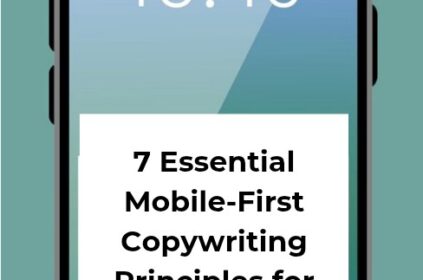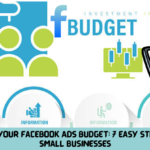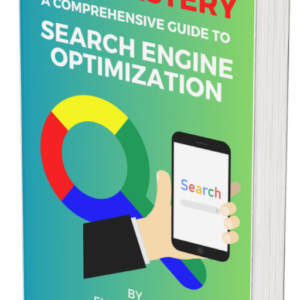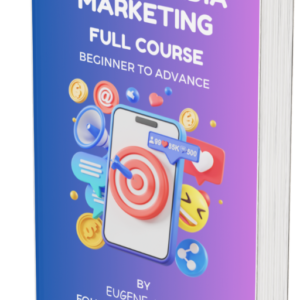Are you struggling with high advertising costs and low returns? Knowing how to reduce CPC in digital advertising and boost conversions is key to running cost-effective campaigns that drive real results.
Many digital advertisers face the challenge of high Cost-Per-Click (CPC), which drains budgets quickly without guaranteeing a strong conversion rate. However, with the right strategies, you can lower your CPC while increasing conversions, ensuring every dollar spent delivers maximum impact.
In this guide, I will explore how to reduce CPC in digital advertising and boost conversions through smart targeting, ad relevance optimization, and strategic bidding techniques. Whether you’re advertising on Google Ads, Facebook Ads, or AdsTargets, these actionable insights will help you achieve better ROI without overspending.
If you’re ready to take control of your ad budget and drive more conversions, stay tuned with me.
Understanding CPC and Its Impact on Your Advertising Budget
Before diving into how to reduce CPC in digital advertising and boost conversions, it is very important to understand what Cost-Per-Click (CPC) means and why it plays a crucial role in your advertising success.
What is CPC?
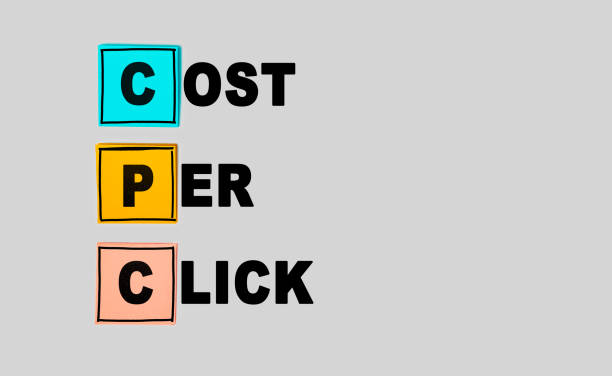
CPC, or Cost-Per-Click, is a pricing model used in digital advertising where advertisers pay a fee each time someone clicks on their ad. It is one of the most common payment structures in platforms like Google Ads, Facebook Ads, Instagram Ads, LinkedIn Ads, Tiktok Ads, AdsTargets Ads, and Bing Ads.
For example, if you run an ad with a CPC of $1.50 and receive 100 clicks, your total ad spend would be $150 (1.50 x 100).
Why Does CPC Matter?
Your CPC in digital advertising directly impacts your ad spend, return on investment (ROI), and overall campaign performance. A high CPC means you’re paying more to attract potential customers, which can quickly deplete your budget. If your CPC is too high and your conversion rate is low, you may end up spending more than you’re earning.
However, lowering CPC without a strategy could also reduce the quality of traffic, leading to fewer conversions. That’s why the goal isn’t just to lower CPC but to reduce it while maintaining or increasing conversions.
What Affects Your CPC?
Several factors determine how much you pay per click. Understanding these factors helps you take the right steps to optimize your campaigns:
#1. Competition in Your Industry
Highly competitive industries, like finance or legal services, have higher CPCs because many advertisers are bidding for the same audience.
Less competitive industries usually have lower CPCs.
#2. Quality Score
Google assigns a Quality Score based on factors like ad relevance, landing page experience, and click-through rate (CTR).
A higher Quality Score leads to a lower CPC because Google rewards relevant ads with lower costs.
#3. Ad Relevance and Click-Through Rate (CTR)
If your ad is relevant to the audience and generates high engagement (CTR), platforms like AdsTargets and Google Ads reward you with a lower CPC.
A poorly targeted or unappealing ad will have a low CTR, increasing your CPC.
#4. Bidding Strategy
In manual bidding, you set a maximum amount you’re willing to pay per click.
In automated bidding, platforms adjust bids based on conversion potential.
Choosing the right strategy can prevent overspending while maximizing results.
How Can You Reduce CPC in Digital Advertising and Boost Conversions?

Now that you understand what CPC is and how it affects your budget, the next step is learning the best strategies to lower your CPC while increasing conversions. In this section, I share practical methods to help you optimize ad targeting, improve your Quality Score, enhance your ad creatives, and use the right bidding strategies for cost-effective results.
How to Optimize Your Ad Targeting to Reduce CPC in Digital Advertising and Boost Conversions
One of the most effective ways to reduce CPC in digital advertising and boost conversions is by refining your ad targeting strategy. If your ads are reaching the wrong audience, you’ll waste money on clicks that don’t convert. By narrowing down your targeting, you ensure that every click comes from a potential customer who is genuinely interested in your offer.
#1. Use Audience Segmentation for Precise Targeting
Instead of targeting a broad audience, focus on specific groups based on demographics, interests, behaviors, and past interactions. Platforms like Google Ads, Facebook Ads, and AdsTargets allow you to create highly customized audiences for better results.

i. Demographic Targeting – Adjust your ads based on age, gender, income level, and location to reach the most relevant users.
ii. Interest-Based Targeting – Show ads to users who have shown interest in products or services similar to yours.
iii. Behavioral Targeting – Target people based on their online activity, such as past website visits, search history, or social media engagement.
iv. Lookalike/Similar Audiences – Use your existing customer data to create a Lookalike Audience (Facebook) or Similar Audience (Google Ads) to reach new users who share similar characteristics.
For example, instead of targeting all “small business owners,” refine your audience to “e-commerce store owners aged 25-45 in the U.S. who have engaged with marketing tools in the last 90 days.” This ensures that your ads reach users with a higher intent to purchase, leading to lower CPC and more conversions.
#2. Use Retargeting to Lower CPC and Improve Conversions
Retargeting (also known as remarketing) is a powerful way to reduce CPC in digital advertising and boost conversions. It allows you to re-engage users who have already interacted with your brand, making them more likely to convert.
How Retargeting Works:
- A user visits your website but doesn’t complete a purchase.
- A tracking pixel (from Google Ads, Facebook Ads, or AdsTargets) places them in a remarketing audience.
- Your ad is shown to them again on different platforms, reminding them to complete their purchase.
Benefits of Retargeting:
- Reduces CPC because retargeted audiences cost less than cold audiences.
- Increases conversions by bringing back interested users.
- Improves ad relevance, which enhances Quality Score and lowers CPC.
For instance, if someone visits your landing page but doesn’t sign up, you can retarget them with a special discount offer to encourage conversion.
#3. Leverage Location Targeting to Avoid Wasting Ad Spend
If your business serves a specific area, location targeting ensures that your ads only reach people in relevant locations.
i. Geo-Targeting – Set your ads to show in specific cities, states, or countries where your audience is located.
ii. Radius Targeting – Target users within a specific distance from your store or business location.
iii. Exclude Irrelevant Locations – Prevent your ads from showing in areas where you don’t operate to avoid wasted clicks.
Let’s say you run a local service business, you don’t need to target the entire country. Instead, focus your ads on users within a 10-20 mile radius of your service area to reduce CPC and increase conversions.
#4. Exclude Irrelevant Audiences to Prevent Wasted Clicks
Just as important as defining your target audience is excluding users who are unlikely to convert. Many advertising platforms allow you to exclude irrelevant audiences to prevent unnecessary spending.
i. Exclude job seekers if you’re running an ad for a premium service.
ii. Exclude past customers if they’ve already purchased (unless you’re running an upsell or loyalty campaign).
iii. Exclude irrelevant age groups or income brackets that don’t align with your customer base.
By refining your targeting, every click you pay for has a higher chance of converting, leading to lower CPC and improved ROI.
How Can You Improve Ad Creatives and Messaging to Reduce CPC in Digital Advertising and Boost Conversions?

Your ad creative plays a crucial role in determining your Cost-Per-Click (CPC) and conversion rate. If your ads fail to capture attention or persuade users to take action, you’ll end up paying for clicks that don’t convert. By optimizing your ad copy, visuals, and CTAs, you can lower CPC while maximizing your return on investment (ROI).
#1. Craft Compelling Ad Copy That Increases Click-Through Rate (CTR)
A higher Click-Through Rate (CTR) improves your Quality Score (Google Ads) or Relevance Score (Facebook Ads), which directly helps in reducing CPC. To achieve this, your ad copy should be:
- Clear and concise – Avoid unnecessary words and communicate your message directly.
- Benefit-driven – Focus on what the user will gain rather than just describing features.
- Action-oriented – Use persuasive calls to action that encourage immediate engagement.
For example, instead of writing “Affordable marketing solutions for your business,” a stronger approach would be: “Boost sales with high-ROI ads—start for just $10 today.” This makes the offer more compelling and results-driven.
#2. Use High-Quality and Engaging Visuals
Visual elements significantly impact engagement and CPC in digital advetising. Ads with high-quality images and videos tend to perform better, leading to lower costs. Best practices for visuals include:
- Using high-resolution images to maintain a professional look.
- Featuring people and emotions to make the ad more relatable.
- Choosing contrast and bold colors to grab attention.
- Matching the ad format to the platform, such as vertical videos for TikTok or carousel ads for e-commerce promotions.
A well-designed ad not only attracts more clicks but also ensures the audience remains interested long enough to convert.
#3. A/B Test Headlines, Descriptions, and CTAs
Testing different versions of your ad elements is key to refining your strategy and achieving lower CPC. The most effective approach is to test one element at a time, such as:
- Headlines – Experiment with variations to see which grabs more attention.
- Descriptions – Compare benefit-driven copy against urgency-based messaging.
- Call-to-action (CTA) – Test direct CTAs like “Sign Up Now” versus softer approaches like “Learn More.”
For example, if “Limited-Time Offer – Shop Now” outperforms “Explore Our Collection,” it indicates that urgency-based messaging works better for that audience.
#5. Align Landing Pages with Ad Messaging
An effective ad campaign extends beyond the ad itself. If a user clicks on an ad expecting a discount but doesn’t immediately see it on the landing page, they are likely to leave without converting. To prevent this:
- Ensure message consistency between the ad and landing page.
- Optimize page speed to avoid slow loading times that increase CPC and bounce rates.
- Make the call-to-action (CTA) clear so visitors know the next step to take.
For instance, if your ad highlights “Get 20% Off Today,” your landing page should immediately reinforce this message with a visible discount banner and a clear “Claim Your Discount” button. This improves conversion rates while maintaining lower CPC.
How to Optimize Bid Strategies and Ad Placements to Reduce CPC in Digital Advertising and Boost Conversions
Effective bidding and strategic ad placements can significantly lower your Cost-Per-Click (CPC) while maximizing your return on investment (ROI). Many online advertisers waste budget due to inefficient bidding tactics or poorly targeted placements. By refining these areas, you can achieve lower ad costs and higher conversions.
#1. Choose the Right Bidding Strategy for Your Goals
Different ad platforms offer multiple bidding options, and choosing the right one is crucial to reducing CPC in digital advertising while maintaining conversions. Here’s how to match the right bidding strategy with your campaign objectives:
1. Manual CPC Bidding – Ideal for advertisers who want full control over bids. Lower your bids for underperforming keywords and increase bids for high-converting ones.
2. Enhanced CPC (ECPC) – A semi-automated strategy where platforms adjust bids based on the likelihood of conversion. This helps balance cost and performance.
3. Maximize Clicks – Best if your goal is to drive more traffic at the lowest possible CPC, but it may not always guarantee high-quality leads.
4. Target CPA (Cost-Per-Acquisition) – If conversions are the focus, this bidding model adjusts CPC automatically to hit your desired cost per conversion.
5. Target ROAS (Return on Ad Spend) – Great for e-commerce businesses aiming for profitable ad spend by prioritizing revenue-driven clicks.
For online advertisers struggling with high CPC, testing Manual CPC first and gradually transitioning to Target CPA or ECPC can help refine performance while reducing unnecessary spending.
#2. Leverage Dayparting to Reduce Wasteful Clicks
Not all hours of the day yield the same level of engagement or conversions. Dayparting (Ad Scheduling) allows you to display ads only when your audience is most active and likely to convert.
- Analyze past campaign data to find peak conversion hours and prioritize those time slots.
- Pause ads during low-converting hours to avoid wasted ad spend.
- If running global campaigns, adjust for different time zones to ensure optimal ad delivery.
For example, an e-commerce store may find that users convert more between 6 PM – 11 PM but click without purchasing during morning hours. Adjusting ad schedules accordingly will lower CPC and increase conversion rates.
#3. Refine Ad Placements to Avoid Expensive Clicks
Ad placement plays a major role in CPC. Poorly chosen placements often result in irrelevant clicks or exposure in areas with low engagement. Here’s how to optimize placement for different platforms:
1. Google Ads Display Network: Exclude low-performing sites where clicks don’t convert. Instead, focus on high-quality placements such as premium blogs and niche industry websites.
2. Facebook & Instagram Ads: Use Automatic Placements initially, then analyze performance data to refine the best-performing placements (e.g., Feed vs. Stories vs. Reels).
3. YouTube Ads: Test in-stream vs. in-feed ads to determine which yields lower CPC with better engagement.
4. TikTok Ads: Avoid broad placements; instead, focus on ad formats that align with your audience’s content consumption habits.
By refining where your ads appear, you reduce ad spend on low-value impressions and clicks, ensuring a better cost-per-click and improved ROI.
#4. Geo-Targeting: Focus on High-Converting Locations
Advertising in the wrong geographic locations can drive up CPC with little return. Instead of targeting broad regions, focus on geo-segments with the highest conversion potential.
- Use location-based bid adjustments to increase or decrease bids based on geographic performance.
- Exclude locations with low conversion rates to avoid wasting ad spend.
- If running local campaigns, use radius targeting to focus on users within a specific distance from your business.
For instance, an online education platform targeting global students may find that users from certain countries engage with ads but don’t convert due to pricing differences. By adjusting bids or excluding these locations, CPC in digital advertising can be reduced while focusing on more profitable regions.
How AdsTargets Can Help You to Reduce CPC and Boost Conversions

AdsTargets is a comprehensive advertising platform designed to help businesses achieve cost-effective advertising while maximizing conversions. Here’s how AdsTargets can assist in reducing your Cost-Per-Click (CPC) and enhancing conversion rates:
#1. Advanced Targeting Options
AdsTargets offers sophisticated targeting capabilities, allowing advertisers to reach specific audiences based on demographics, interests, and behaviors. This precision ensures your ads are displayed to users most likely to engage, thereby reducing unnecessary clicks and lowering CPC.
#2. Automated Ad Optimization
The platform utilizes automated ad optimization technology to continually assess and adjust your campaigns for optimal performance. By analyzing real-time data, AdsTargets ensures your ads are served under the most favorable conditions, effectively reducing CPC and increasing conversion rates.
#3. Diverse Ad Formats
With a variety of ad formats—including banner ads, interstitial ads, text ads, mobile ads, video ads, e-commerce ads, native ads, and retargeting ads—AdsTargets enables advertisers to choose the formats that best resonate with their target audience. This flexibility enhances user engagement and boosts conversion potential.
#4. Real-Time Tracking and Conversion Tracking
AdsTargets provides live statistics and conversion tracking features, allowing advertisers to monitor campaign performance in real-time. This transparency facilitates swift adjustments to strategies, ensuring continuous improvement in CPC and conversion metrics.
#4. Competitive Pricing Models
The platform supports multiple pricing models, including CPC, CPM, CPA, and CPV, starting from as low as $0.001 for pay-per-click ads. This affordability allows advertisers to select the most cost-effective approach aligned with their marketing objectives, thereby reducing overall advertising costs while maintaining or enhancing conversion rates.
By leveraging these features, AdsTargets empowers businesses to conduct efficient advertising campaigns that effectively reduce CPC and boost conversions, leading to improved return on investment.
Conclusion
Reducing CPC in digital advertising while boosting conversions is not just about cutting costs—it’s about refining your strategy to drive high-quality traffic that converts. By optimizing targeting, improving ad creatives, leveraging automation, and continuously testing, businesses can achieve lower costs per click while increasing their ROI.
Platforms like AdsTargets make this process even more efficient by offering advanced targeting, automated optimization, diverse ad formats, and real-time tracking. Whether you’re a small business or an established brand, utilizing the right tools and strategies ensures that every advertising dollar is well spent.
Now is the time to take control of your digital advertising budget. Implement these strategies and start lowering your CPC in digital advertising while maximizing conversions today!



